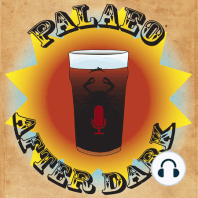123 min listen
Podcast 230 - A Rambling Time
ratings:
Length:
114 minutes
Released:
Feb 27, 2022
Format:
Podcast episode
Description
The gang discusses two papers that look at topics in biogeography. The first paper reviews the concepts of cradles and museums (and whether we should retire those concepts), and the second paper explores traditionally defined Devonian bioregions. Also, the gang uses the broad topics from both of these papers to talk about a lot of tangentially related topics. Meanwhile, James has strong opinions about what is edible, Curt disagrees, and Amanda remains painfully neutral throughout. Up-Goer Five (Curt Edition): Our friends talk about two papers that look at the ways we talk about the places animals come from. The first paper is looking at two words that we use to talk about these places. The words are used to talk about places where new living things come from and places where living things can stick around for a long time. The paper talks about how those words were first used and why they came up in the first place, and then talks about how we have changed what we mean by those words in ways that maybe is not helping us better know about places. They talk a lot about how the way these words were first used has now been forgotten, and so the way we use them today makes things a little too simple. Instead of focusing on finding the simple form of these places, we should be looking at the ways the world works which can make some areas better for new living things to form or for old living things to stick around. The second paper looks at whether or not animals that are close to each other come from the same places through time. Are there places that have their own types of animals which all come from just those places for a really long time. They look at the whole world a long time ago when people have said that they can find these groups of animals that all come from one place. They look at a lot of other studies and use those studies to run another study. They find that some of the smaller areas may show what people have said in the past, but most of the big areas do not have this long time where all the animals are from this one place. The reason why it may have looked like that in the past may be because of how we got those old animals and the types of people who were allowed to go out and get those old animals in the past. References: Vasconcelos, Thais, Brian C. O’Meara, and Jeremy M. Beaulieu. "Retiring “cradles” and “museums” of biodiversity." The American Naturalist 199.2 (2022): 194-205. Dowding, Elizabeth M., Malte C. Ebach, and Evgeny V. Madroviev. "Validating marine Devonian biogeography: a study in bioregionalization." Palaeontology (2021).
Released:
Feb 27, 2022
Format:
Podcast episode
Titles in the series (100)
Podcast 2 - Clocklike Clocks: This week's podcast we eventually get to talking about Molecular Clock studies dealing with early divergence times and the colonization of land... Also Christopher Lambert by Palaeo After Dark
